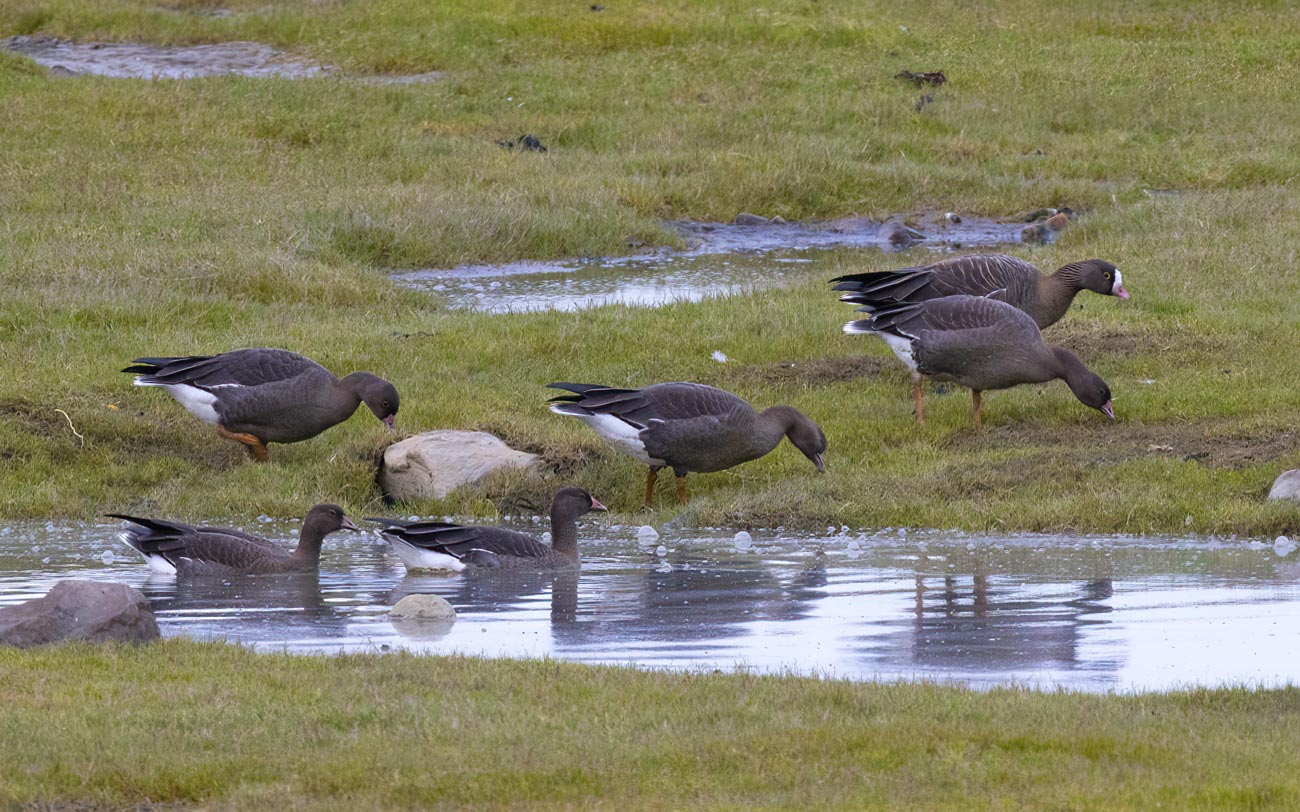Lesser White-fronted Goose enjoys prolific breeding season
The Critically Endangered Fennoscandian population of Lesser White-fronted Goose has experienced an exceptional breeding season this summer.
No fewer than 137 individuals, 83 of which were juveniles, were counted at Valdak Marshes in Finnmark, Norway, on 22 August by BirdLife Norway's Tomas Aarvak.
This represents the highest number of fledged youngsters noted in the population since monitoring began in 1990. By comparison, one juvenile fledged in 2020, four juveniles fledged in 2021 and in 2022 the total was seven. This year's young came from no fewer than 23 broods, with some pairs raising up to five goslings.

Some of the young Lesser White-fronted Geese seen at Valdak Marshes, Finnmark, in late August (Tomas Aarvak / BirdLife Norway).
After many years of disastrously low nesting success, this year's productivity is a welcome surprise for conservationists. Ellen Hambro of the Norwegian Environment Agency commented: "This is fantastic news, which both surprises and greatly pleases after many decades of low young production.
"Since this is the only remaining breeding area in Europe, we in Norway have a special responsibility to take care of this population."
Lesser White-fronted Goose was historically common in Norway, with a breeding population of some 10,000 individuals persisting in the early 20th century. However, unsustainable hunting in Norway as well as along its migration routes and on wintering grounds caused a dramatic decline subsequently. Since 2000, only 20-35 pairs have persisted in Finnmark, while the species has become extirpated as a breeder in neighbouring Finland and Sweden (the last truly wild breeding birds in Sweden were recorded in 1991). Little is known about the geese breeding on the Kola Peninsula in north-western Russia, which biologically form part of the Fennoscandian population.
The population reached a low ebb in the mid- to late 2000s, when only around 30 birds returned to the Norwegian breeding grounds. Increased predation by Red Foxes led to the introduction of a culling programme in Lesser White-fronted Goose's core breeding area in 2008. Since then, the number of geese has been steadily rising, even if breeding productivity has remained low.
Despite this year's success, the population remains precariously small and threats such as hunting, disturbance and habitat loss remain very real to Fennoscandia's Lesser White-fronted Geese.

